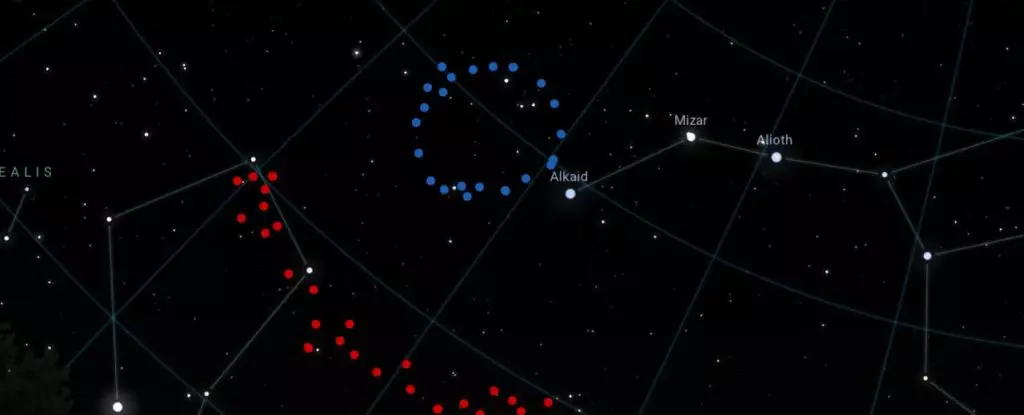In a mind-boggling revelation that challenges our current understanding of the Universe, astronomers have stumbled upon a colossal structure in the far reaches of space. Residing 6.9 billion light-years away, this massive entity takes the form of a near-perfect ring comprising galaxies spanning a staggering 1.3 billion light-years in diameter. Dubbed the Big Ring, this anomalous structure has thrown a wrench into the gears of established cosmological theories. The discovery, spearheaded by astronomer Alexia Lopez of the University of Central Lancashire, was unveiled at the 243rd meeting of the American Astronomical Society and documented in a pre-print paper available on arXiv.
The Perplexing Puzzle
Adding to the bewilderment is the proximity of the Big Ring to another colossal structure known as the Giant Arc, both of which defy conventional explanations. The sheer size, distinct shapes, and unusual closeness of these structures suggest that they harbor crucial insights that could revolutionize our current cosmological framework. One immediate point of reference that springs to mind is the Baryon Acoustic Oscillation (BAO), which consists of large, circular clusters of galaxies dispersed across the cosmos. Unlike typical BAOs, the Big Ring showcases a corkscrew-like configuration, deviating significantly from the standard spherical shape. This glaring deviation raises a paramount question – what exactly is the Big Ring and what implications does it hold for the fundamental Cosmological Principle?
The implications of the Big Ring extend beyond its colossal dimensions, delving into the heart of cosmology itself. The prevailing cosmological model, which aligns closely with observable phenomena, faces challenges in explaining these peculiar structures. Alternative models, such as Roger Penrose’s conformal cyclic cosmology, offer a fresh perspective by proposing endless cycles of Big Bang expansions.
Moreover, the notion of cosmic strings, topological defects in spacetime akin to proton-wide wrinkles, emerges as a potential explanation for these enigmatic structures. While physical evidence of cosmic strings remains scant, theoretical support lends credence to their plausibility. However, the Big Ring and its enigmatic counterpart, the Giant Arc, continue to shroud themselves in mystery, eluding definitive categorization. The quest for understanding these cosmic enigmas hinges on unearthing similar galaxy arrangements dispersed throughout the Universe, laying bare the underlying mechanisms governing these colossal entities.
The veil of uncertainty surrounding the Big Ring and the Giant Arc underscores the limits of our cosmic comprehension, urging astronomers to revisit established paradigms and embrace the profound mysteries that lie beyond our current grasp. Lopez aptly captures the sentiment when she states, “From current cosmological theories, we didn’t think structures on this scale were possible.” The coexistence of these colossal structures in cosmic proximity challenges us to deepen our understanding of the Universe and redefine the boundaries of our cosmological knowledge. As we stand on the precipice of discovery, the Big Ring beckons us to unravel its cryptic message and embrace the infinite wonders that await in the vast expanse of the cosmos.


Leave a Reply